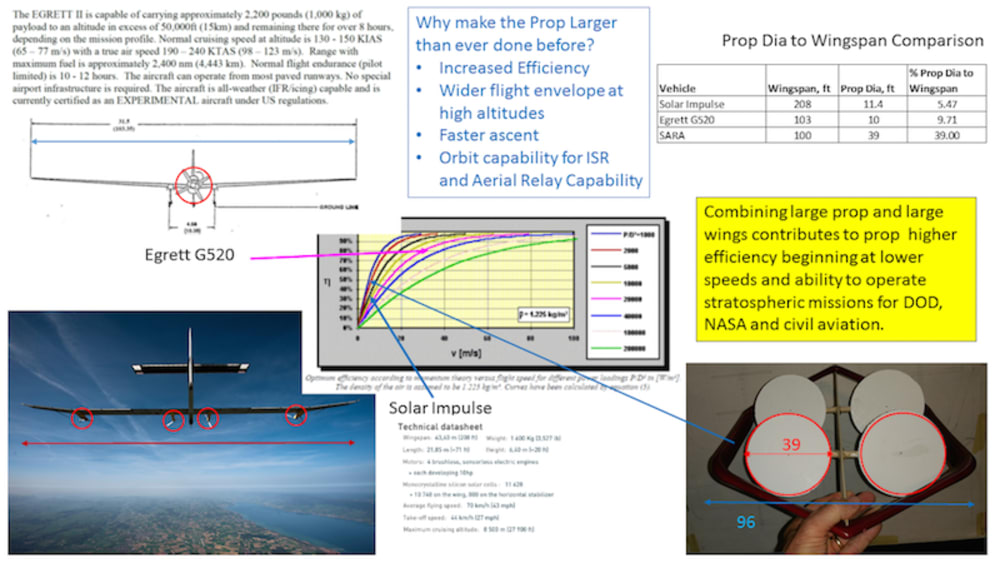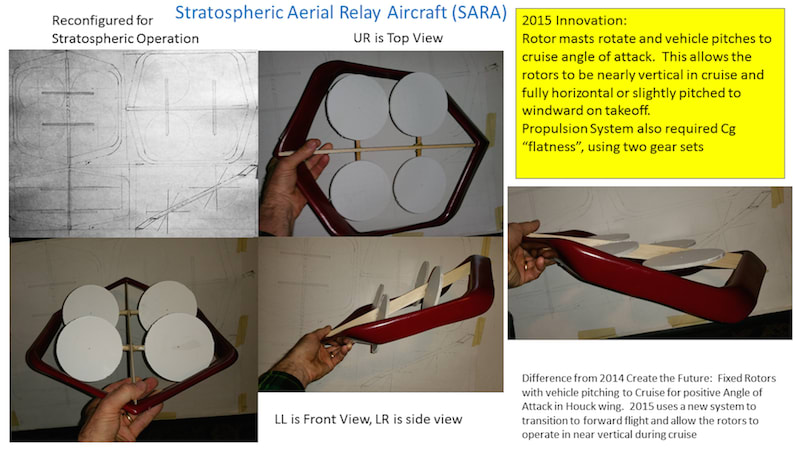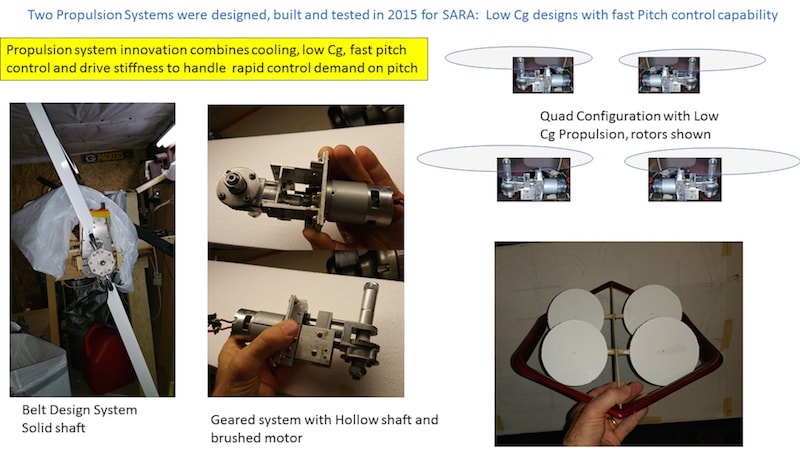Efficient propulsion for a stratospheric aerial relay aircraft (SARA) is described from the perspective of prior art. Aircraft such as the E-11A, EQ-4B, Grob Stratos 2C, Egrett G520, U2, and WB-57 are stratospheric cruisers with endurance from 7-32 hours. The E-11A cruises at Mach 0.8, and the Egrett at Mach 0.4. The Egrett cruises at 1/20th the fuel of the E-11A and can remain high on the horizon of ground nodes for just as long. The unique properties of the Egrett and Grob Stratos are: Large wing and large propeller (3 and 6 meters, respectively). The objective of the Propulsion for a SARA High Altitude Long Endurance (HALE) aircraft is to increase the propeller size to even larger size with reasonable performance payback. The problem with very large propellers is that the aircraft would need to tail-sit, ie vertical takeoff and land. That is what a helicopter is, minus wings.
The work entered my 2014 CTF submission was the platform, and this entry is for an efficient propulsion system. The unique properties of the propulsion system are: 4-6 units are used in the center of a glider Houck wing configuration, the propulsion requires very fast response variable pitch control with minimum 10 Hz bandwidth, the prop/blade shaft needs to be hollow, the drive system needs to be packaged flat to reduce Center of gravity effects on the vehicle, and the gearing needs to be stout with the potential quick reaction of pitch torqueing the gearset, and the group of 4-6 propulsion units must rotate together (similar to a quad or hexrotor) on a main gimbal. The Phase I Test vehicle has 39” rotors and two 96” Houck wings (front and back). This would be the equivalent of a 100’ wingspan Egrett having several 40’ propellers, not the single 10’ prop it carries now. The TU-95 Bear has a 12% prop/wing ratio, the Egrett has a 9% ratio. SARA has a 40% ratio.
Although current attempts with solar powered aircraft do exploit efficiency gains with large distributed power, the Power/Diameter have reached the proposed 750 in SARA (750 Watts/1m x 1m). Epperle (http://www.mh-aerotools.de/airfoils/) has some nice velocity vs efficiency curves for a range of P/(DxD). For a typical general aviation vehicle with 100,000W into 2 meter prop P/(DxD) is 25,000, with efficiencies around 70%. Solar Impulse uses a 7500W into 3.5m or P/(DxD) of 612, and prop efficiency of 85%. The vehicle cruises at 50 mph, but capable of 86 mph. For a higher flying vehicle, such as the Egrett (300000W/3mx3m)=33,000, the propeller efficiency is higher than 80%, and with 4 blades the loading allows it to cruise at Mach 0.4 at 48,000ft. It can also perform typical ISR and aerial relay duties with orbits as small as 5 nmi diameter. The SARA propulsion system is an attempt to allow an aircraft to carry extremely large propellers on large winged platforms. It does this by employing a VTOL configuration (quad or hexrotor), which also reduces runway needs.
Video
Like this entry?
-
About the Entrant
- Name:Gregory Heinen
- Type of entry:individual
- Software used for this entry:COMSOL, EXCEL, Matlab
- Patent status:pending








